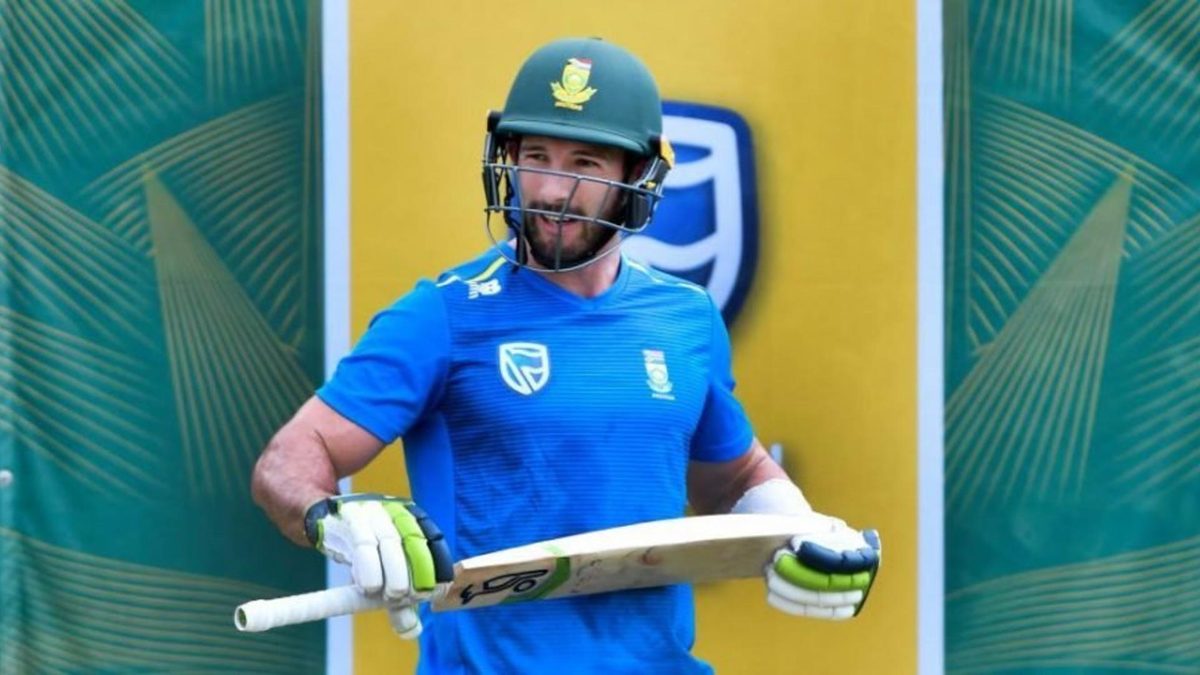
Opening batsman Pieter Malan is in line for a Test debut for South Africa in the New Year’s Test against England in Newlands. At 30, his has been a late call-up to the Proteas side, but is a well-earned inclusion in the squad.
He has been on the sidelines of selection so far, having made it to the A squads. Should he make the XI for the second Test, his experience at Newlands will also be handy.
However, the potential international selection is a contentious one as Malan’s inclusion will almost certainly mean that the home team’s XI falls short of the transformation quota for players of colour for the second game in succession.
Here’s how he’s made it this far.
Who is Pieter Malan?
Malan is a right-handed batsman who made his first-class debut in 2007. While he can bat anywhere in the top six, he has forged a fantastic record at the top of the order in the domestic set-up. In 148 first-class matches, he has over 10,000 runs: his 10,161 runs have come at an average of 49.33, with 32 hundreds.
Keegan Petersen was called up to South Africa's squad as a replacement for the injured Aiden Markram for the New Year's #SAvENG Test. Here's what you need to know about him 👇https://t.co/NEKuZZl20a
— Wisden (@WisdenCricket) December 31, 2019
Having made his debut for Northerns, he now plays for Cape Cobras and Western Province in the franchise and provincial competitions respectively. In the four-day franchise competition this season, he has scored 199 runs from six innings. More compellingly, he made 124 for Western Province in their three-day game against Northern Cape.
Consistency has been his hallmark. In the 2018/19 season, he was the third-highest run-getter in the four-day franchise series, scoring 821 runs from 16 innings at 51.31. In the season before that, he was the third-highest run-getter, accumulating 892 runs at 55.75.
Rise through the ranks
Malan comes from a family of cricket. His brother Andre, 28, plays for Western Province, while Janneman, 23, has played two T20Is. The trio once all scored first-class centuries on the same day of the same game.
Malan’s first national call-up came when he was included in the squad for the third Test against Pakistan, as a potential replacement for an injured Markram.
At the time, Linda Zondi, convener of selectors, said, “Pieter has an outstanding track record in four-day domestic cricket over the past two seasons, having made more than 1,700 runs including seven centuries. He has also made the step up to South Africa A level, first against Australia and then against India A on the sub-continent.”
With incumbent Aiden Markram having injured himself in the first game, coach Mark Boucher said South Africa were leaning towards a like-for-like replacement in the next match. That indicates that Malan is poised to bring his opening expertise to the top of the order, and potentially no other changes to the rest of the batting line-up. This also means that Temba Bavuma, a black African, who missed the first game with illness, could have to sit out.
South Africa may have considered making room for Bavuma in the middle order by dropping Rassie van der Dussen, but that, Boucher pointed out, has become an undesirable option given van der Dussen’s superb fifty in South Africa’s second innings in Centurion. The failure to meet the quota in two successive games might raise eyebrows.
Challenges?
Plenty! Opening in South Africa, where the ball moves laterally in conjunction with lively bounce, is among the toughest jobs in cricket. Since the start of the decade, openers have averaged only 31.34 in South Africa, even lower than the 32.24 in England, which is often regarded a tough challenge for openers owing to the use of the swing-friendly Dukes ball. His job becomes that much more difficult considering the skill in England’s pace attack.
The on-field challenges aside, the fact that it would mean the transformation targets aren’t met might lead to constant questions over his position and greater pressure on him to deliver.








